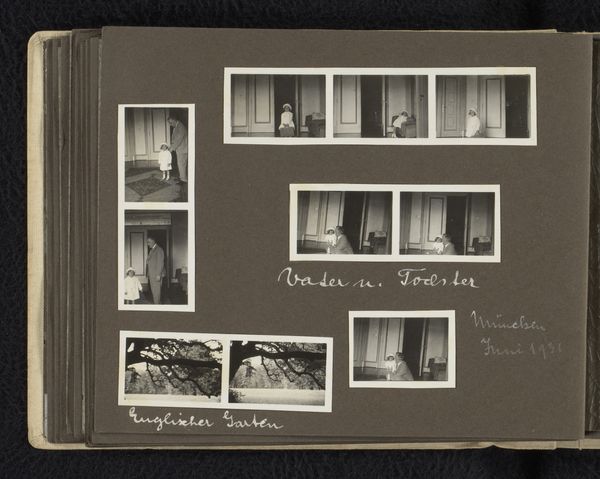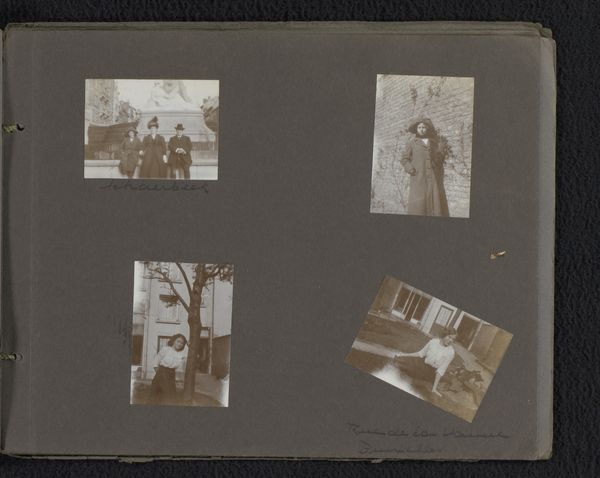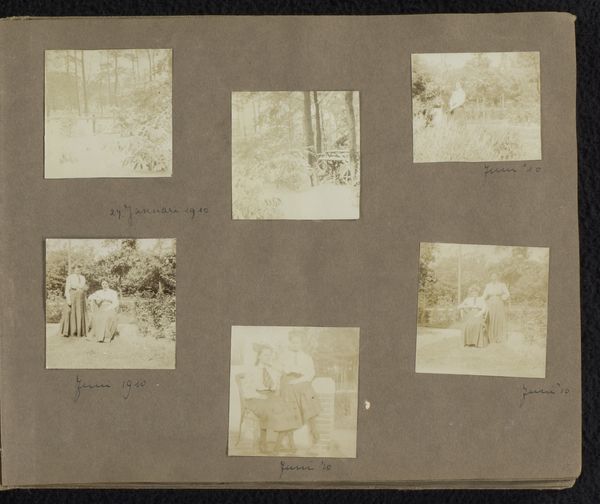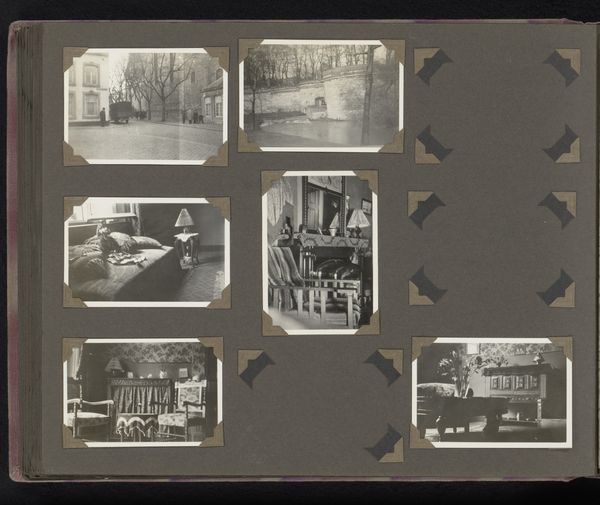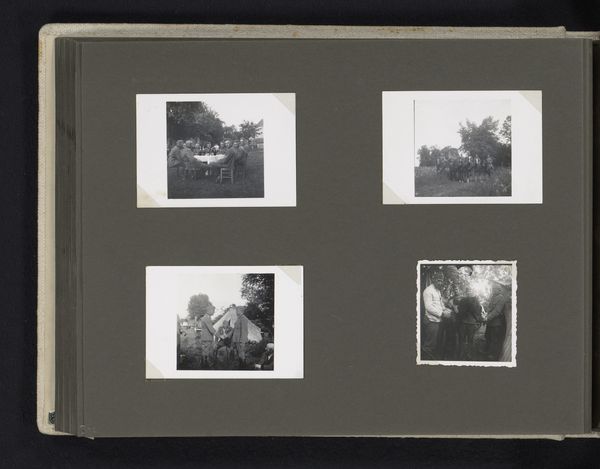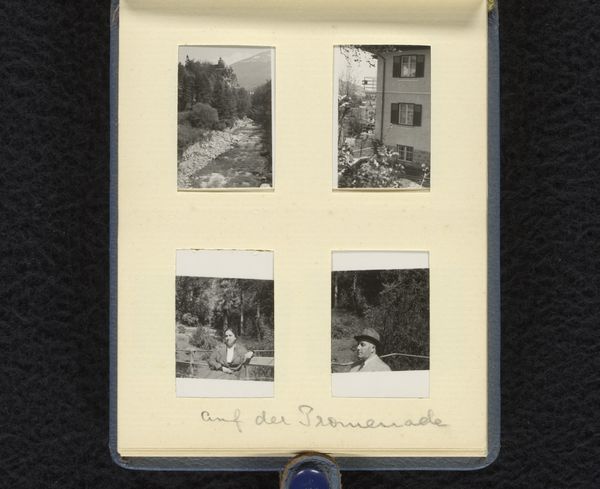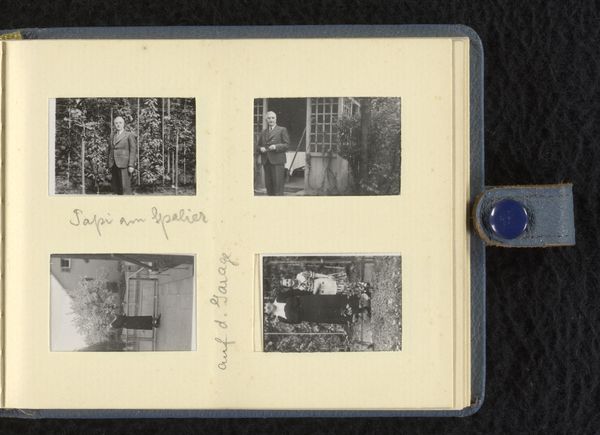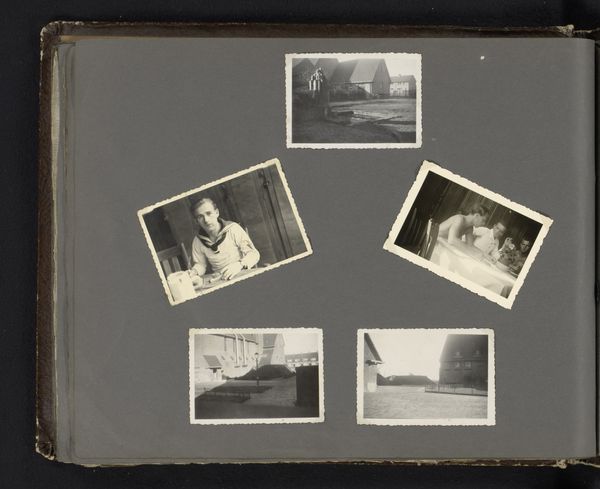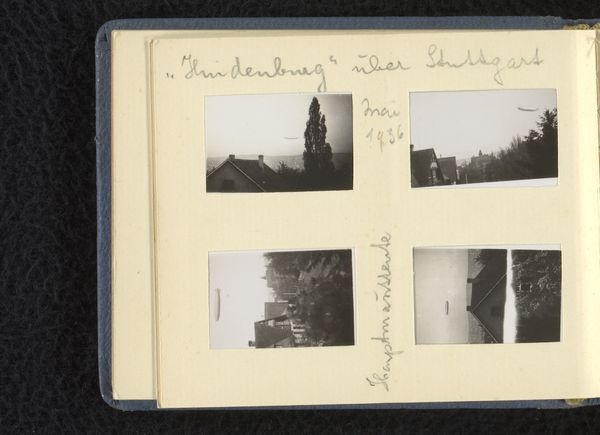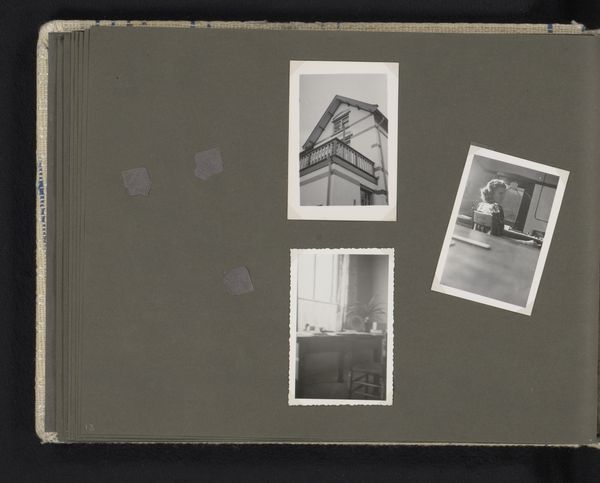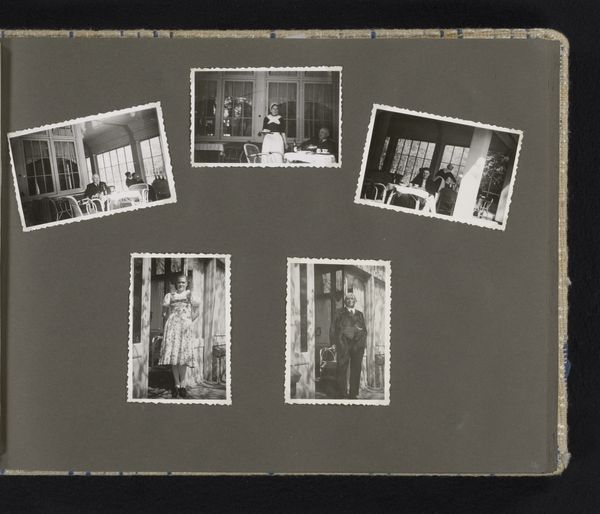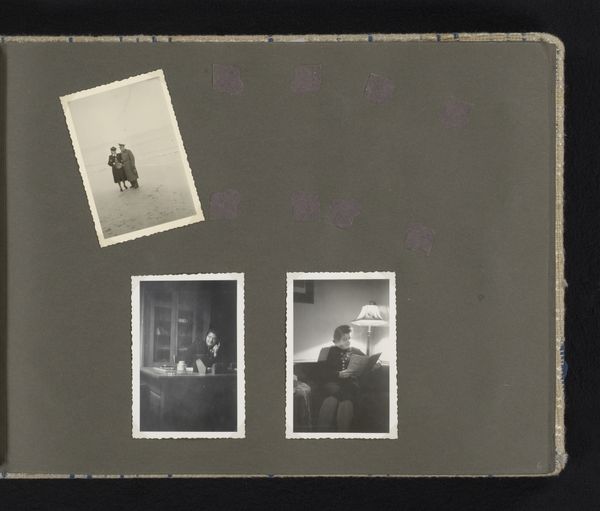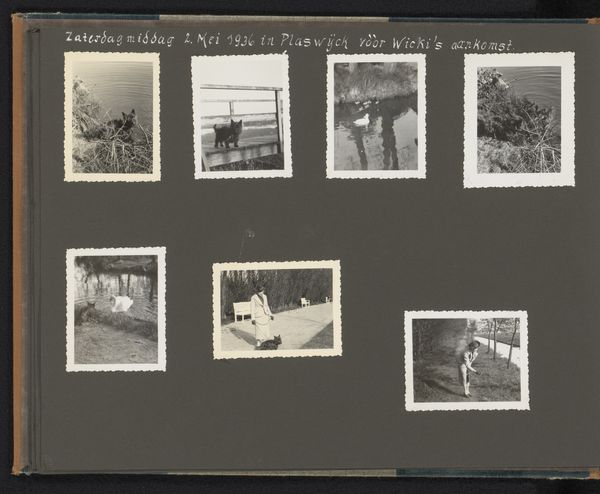
Isabel Wachenheimer in de tuin van dr. Schindler, mei-juni 1931, München 1931 - 1935
0:00
0:00
Dimensions: height 40 mm, width 27 mm, height 150 mm, width 210 mm
Copyright: Rijks Museum: Open Domain
Editor: This is a page from a photo album featuring various gelatin-silver prints, with a title in cursive that translates to "At Dr. Schindler's." The photo that grabs me most is of two young girls in front of a rudimentary swing set in the garden. What do you see in this piece that speaks to its historical context? Curator: The album page gives us a cluster of visual signifiers, specifically of children within domestic, garden spaces. This was created in Germany in the early 1930s; it's impossible to divorce these images from the rising tide of nationalism and eugenics that soon led to unimaginable atrocities. The carefully arranged scenes of domestic life must be understood as documents participating in an increasing desire for order in the face of both the trauma of WWI and a tumultuous economic landscape. Do you see any other images on the page that particularly stand out to you in that regard? Editor: I do, now that you point it out. Some photos have children looking away, isolated and confined by architecture, creating an uncomfortable atmosphere. The children are in what appears to be a play space, yet the composition invokes more of alienation than a healthy safe childhood. Curator: Exactly! And how do these depictions of children potentially reflect or resist societal expectations placed upon them during this time? Consider the increasing emphasis on racial purity and the role of women in producing “healthy” offspring. Do these images seem to normalize or challenge those notions? Editor: They definitely unsettle any straightforward idea of the wholesome family. Seeing the girls on the swings, the composition makes it seem very lonely, almost melancholic in a way. Curator: And isn't that telling? In a period of constructed ideals of motherhood, home, and family, a German-expressionist photograph manages to reveal, or perhaps accidentally betray, the inherent tensions of those social expectations. Editor: It really shifts my perspective when I think about the historical context alongside these visuals of children, and the power of photography during this period. Curator: Indeed. Analyzing art within socio-historical and theoretical frameworks allows for richer and critical interpretation of artworks such as this family album page.
Comments
No comments
Be the first to comment and join the conversation on the ultimate creative platform.
